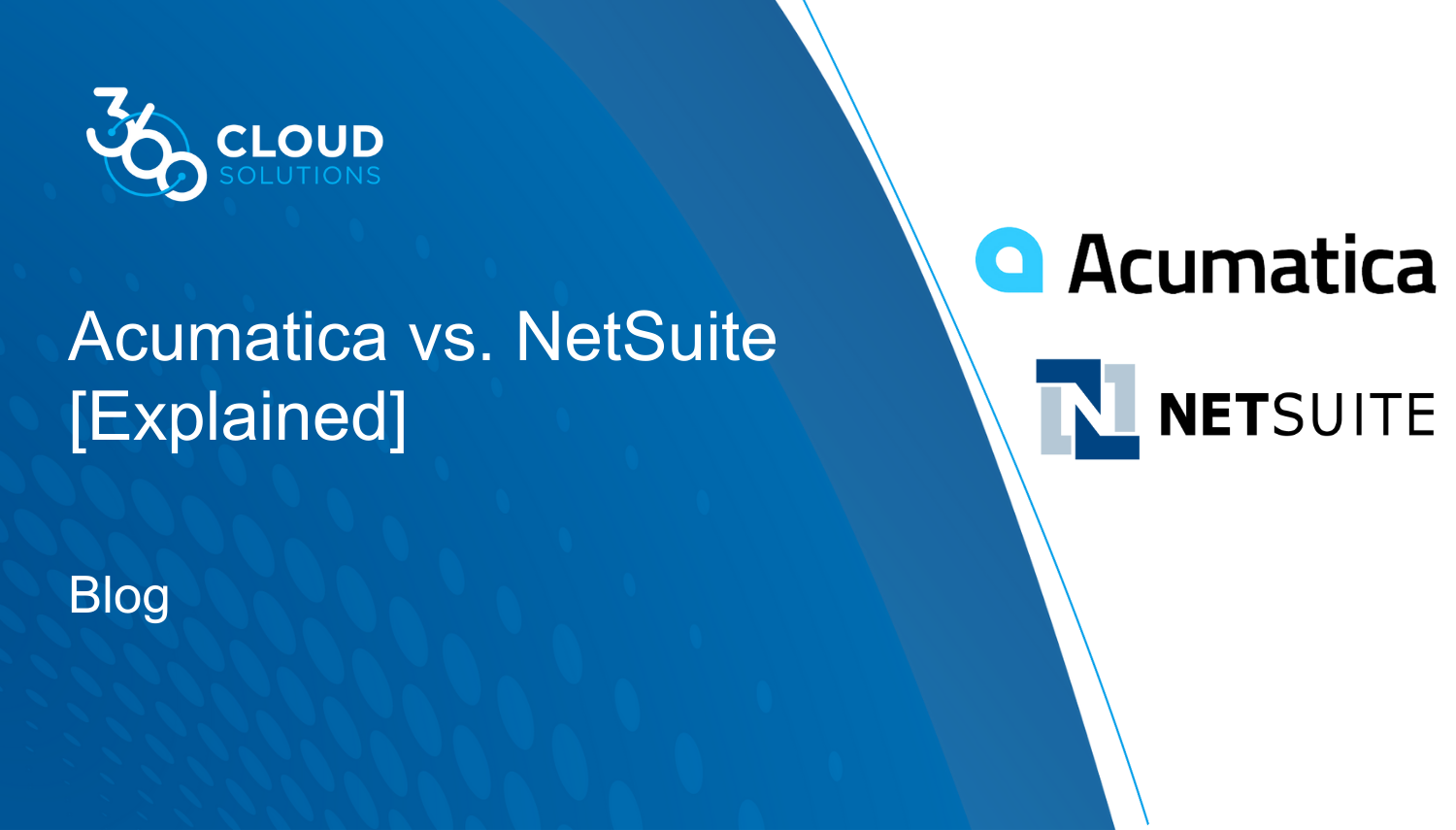
There are a number of ERP solutions out there to support business efficiency at every stage of growth. It can be challenging to cut through the noise to determine which of these solutions might best suit your unique business needs. The cost of an ERP system that doesn’t live up to its reputation only results in frustration, lost profits, and time.
To help you understand the differences across two popular ERP solutions, NetSuite and Acumatica, we’re offering a side-by-side comparison of key features, industries served, costs, and support you’ll find with each solution. With this information, you can better gauge which solution might best fit your company today and into the future.
Background on NetSuite and Acumatica
Bellevue, Washington-based Acumatica was founded in Moscow in 2008 by a team of platform developers with the company Parallels. In developing a next-generation billing solution, they decided to create a separate company that could apply its technology to the ERP market.
Today, Acumatica provides services to a range of industries focusing on construction, distribution, manufacturing, retail-commerce, and service industries. It touts more than 8,000 companies using its platform, focusing on mid-sized companies.
Austin, Texas-based NetSuite was founded in 1998 by Evan Goldberg, who serves today as the company’s executive vice president. At that time, the company provided the first cloud computing solution. Oracle Corp., one of Netsuite’s early investors, acquired the company in 2016.
NetSuite offers a wide range of services to more than 28,000 customers across 200-plus companies worldwide. It services more than 20 industries with deep expertise and experience in each vertical and industry-specific add-on service.
Feature Comparison: NetSuite vs. Automatica
At their heart, Acumatica and NetSuite provide real-time insight into critical business data. With advanced acuity in financial management tools, accounting across corporate entities, payroll, inventory management, multi-channel commerce, and point of sale systems, as well as customer resource management. Acumatica additionally offers tools for construction management.
While NetSuite provides a greater depth of services in these high-level categories, a few key areas demonstrate how NetSuite stands apart.
Cloud-based vs. on-premise solutions
NetSuite first stood apart from the pack by launching in the 1990s as the first proper cloud-based computing solution. Acumatica offers both on-premise as well as cloud solutions.
While this approach allows flexibility for customers who may not be ready to leap to cloud-based solutions, it also opens the door to ineffective implementation. That’s because on-premise solutions don’t always allow for real-time updates or connection via any device, leading to the silos and dated data that drive many people to new ERP solutions.
In fact, Acumatica itself promotes cloud-based solutions as a preferred alternative and outlines disadvantages from on-premise ERP on its website.
Acumatica vs. NetSuite implementation and training
Acumatica connects customers with a local partner who can guide them through the software implementation process for their business. This means you are subject to the availability of a local partner who may or may not understand your core business needs.
NetSuite encourages businesses to connect with one of their licensed experts, selecting a partner on their own terms to ensure they are paired with a company experienced in your industry’s needs. Many of these companies date back nearly as far as NetSuite itself, ensuring customers benefit from decades of experience.
NetSuite experts like 360 Cloud Solutions have expertise in guiding companies through an effective NetSuite implementation that begins with a business process review. This ensures a NetSuite implementation’s success by helping businesses navigate operational improvements before rolling out a new ERP.
Acumatica vs. NetSuite add-ons
Another key critical difference between Acumatica vs. NetSuite is that Acumatica allows developers to create custom integrations that can be incorporated into a company’s ERP solution. These modules from outside developers include solutions, such as global business management, that NetSuite provides as a core part of its offering. For developers, this provides ease in tailoring the software to one’s needs. For companies that don’t have developers on staff, this means accepting limited functionality and add-ons that may or may not address your business requirements.
NetSuite’s comprehensive base offerings provide extensive functionality. It also offers a wide range of modules that can be easily plugged into your existing solution. Companies can scale up their functionality as their business grows using business modules designed by NetSuite to build upon the software’s core capabilities.
Acumatica vs. NetSuite customer support
In addition to 24/7 access to direct support from Acumatica, the company will connect customers with its international network of resellers for ongoing support. This means Acumatica may not match you with the right local partner for your needs.
While NetSuite also offers direct 24/7 support, it also encourages businesses to work directly with licensed NetSuite companies. Through this relationship-based approach, NetSuite users gain help in using ERP functions and a partner who can help address specific business challenges.
Acumatica vs. NetSuite cost comparison
Both solutions promote a pay-as-you-need approach that allows growing businesses to tailor the solution to meet their needs and budgets. While the overall expense will vary for both, based on the number of integrations needed and users on the platform, NetSuite generally comes out as a more cost-effective solution, particularly for small businesses.
NetSuite sells its software solution directly through its licensed third parties. Still, these parties also provide ongoing support for an additional fee for companies that want the strength of an experienced ERP partner on their side. Acumatica users will pay a monthly fee based on the number of modules used, amount of data contained, and projected number of transactions – variations that can create confusion around billing.
Why do companies choose NetSuite over Acumatica?
Experience is a key advantage when working with the NetSuite solution. End-users gain more than 24 years of development based upon end-user feedback. However, there are plenty more reasons that over 28,000 customers choose NetSuite over Acumatica.
The best way to understand why more users choose NetSuite is to try it yourself. You can build a personalized NetSuite demo with 360 Cloud Solutions or contact us with questions about taking the next step on a NetSuite implementation.




